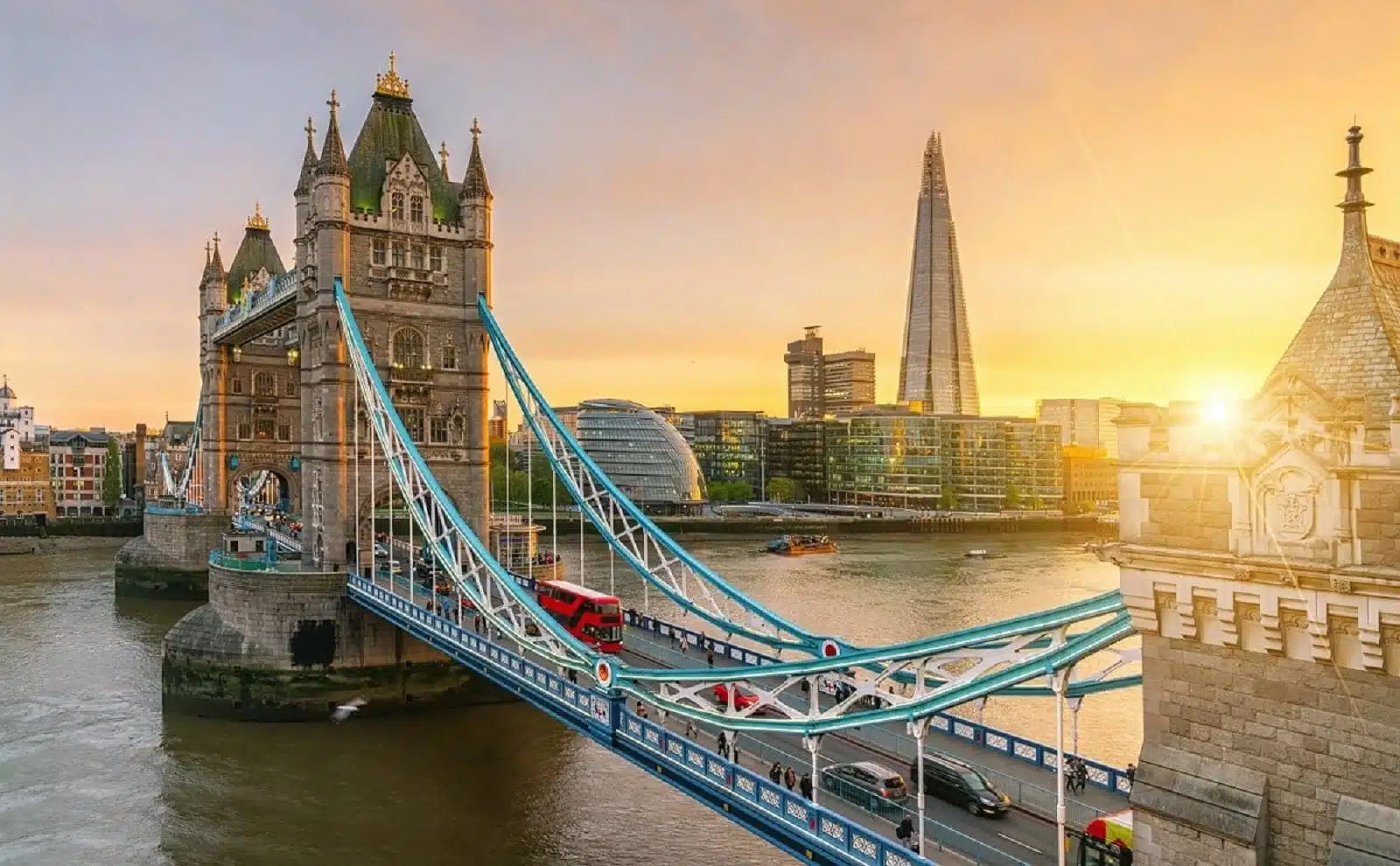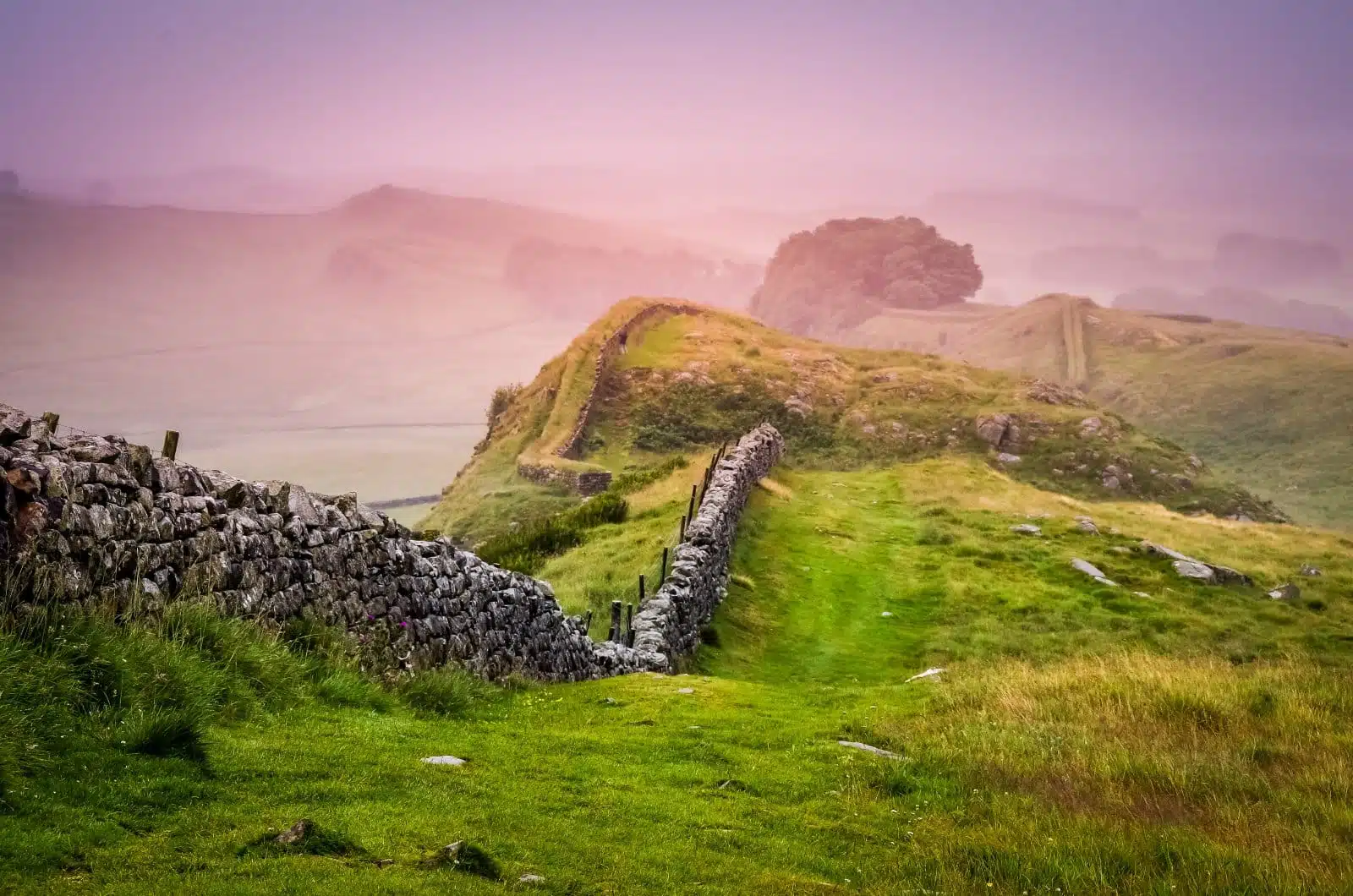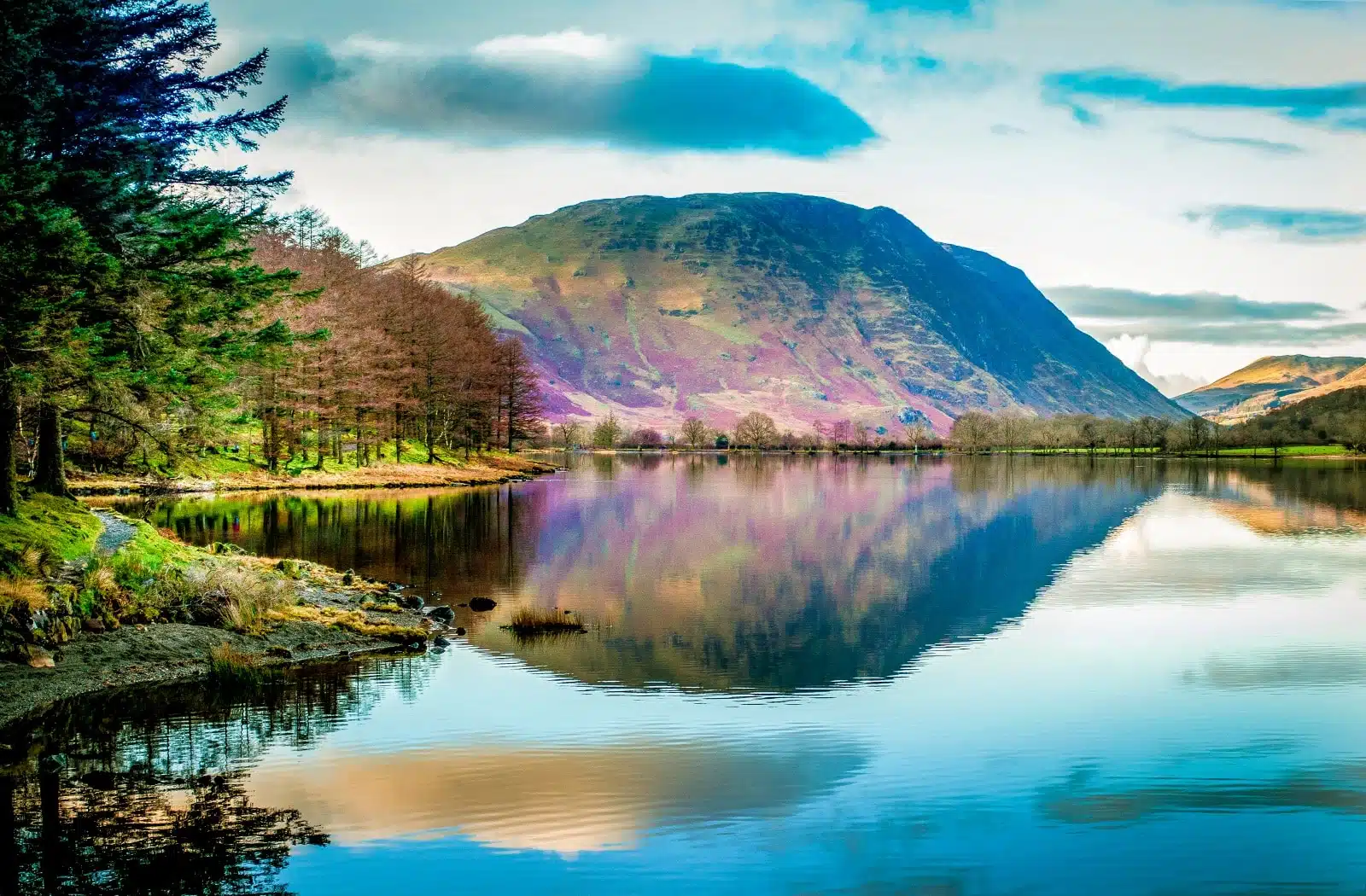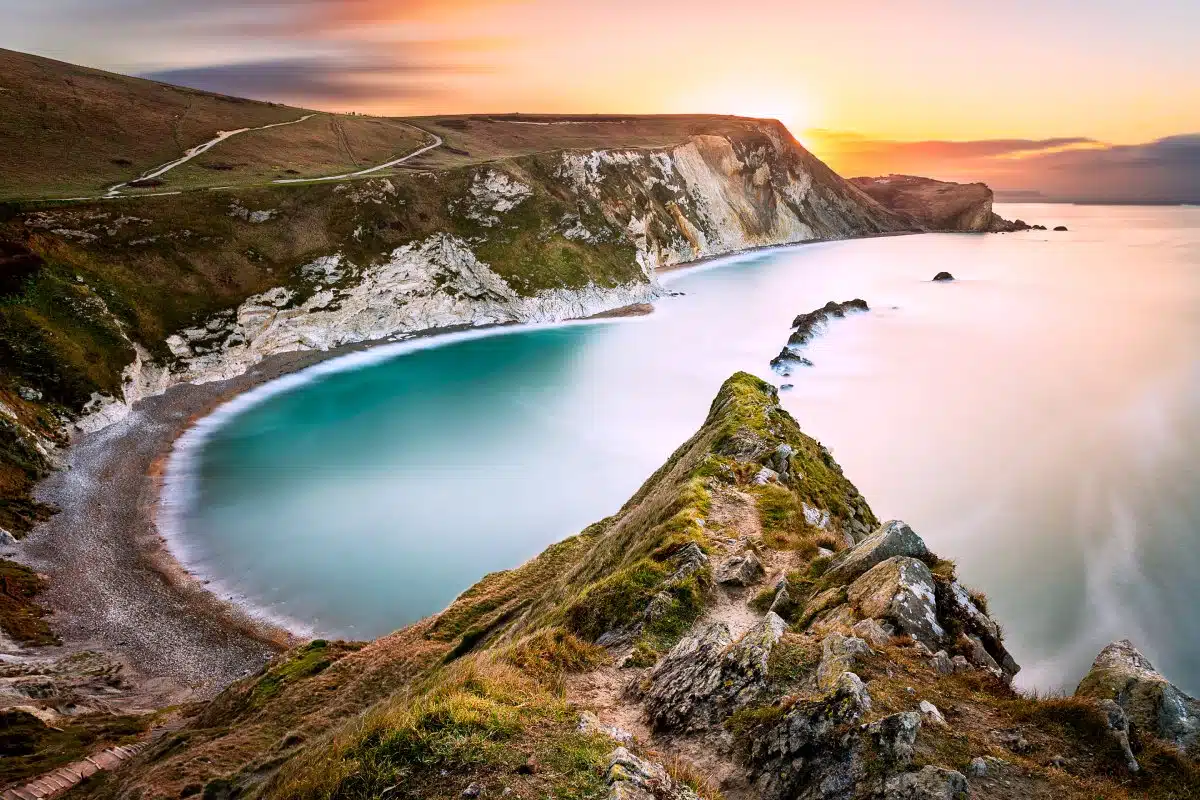The United Kingdom, steeped in history and natural beauty, is home to an impressive array of UNESCO World Heritage Sites. These sites, recognized for their cultural, historical, or scientific significance, offer visitors a profound insight into the UK’s contribution to the world’s heritage. From the architectural marvels of ancient times to the breathtaking landscapes that have inspired artists and writers, each site tells a unique story of the past and present. This guide provides an insider’s look into their significance and practical visitor tips to enhance your experience.
History of UNESCO

Image Credit: Shutterstock / Novikov Aleksey
The United Nations Educational, Scientific and Cultural Organization (UNESCO) was established on November 16, 1945, to promote peace and security through international cooperation in education, the sciences, and culture. UNESCO’s World Heritage mission began with adopting the World Heritage Convention in 1972, a landmark agreement to identify and preserve the world’s cultural and natural heritage of outstanding value to humanity. Today, the World Heritage List includes over 1,000 sites globally, each recognized for its unique contribution to the diversity and richness of global culture and the natural environment.
1. Tower of London, England

Image Credit: Shutterstock / r.classen
The Tower of London, a historic castle on the north bank of the River Thames, is a symbol of power and tradition. Its history spans over a thousand years, serving variously as a royal palace, prison, treasury, and home to the Crown Jewels of England. The Tower’s architecture highlights the various phases of English history, from the Norman conquest to the Tudor reign. Visitors can explore the White Tower, medieval royal apartments, and the infamous Bloody Tower, where many figures were imprisoned and executed. The Crown Jewels exhibit is a highlight, showcasing centuries of royal regalia.
Insider’s Tip: Attend the Ceremony of the Keys, the traditional locking up of the Tower, a ritual that has taken place every night for over 700 years. Tickets are free but must be booked well in advance.
When to Travel: Spring (March to May) and autumn (September to November) offer mild weather and smaller crowds, enhancing the visiting experience.
How to Get There: The Tower is easily accessible via public transport in London, with the nearest tube stations being Tower Hill and London Bridge.
2. Hadrian’s Wall, England

Image Credit: Shutterstock / elaine501
Hadrian’s Wall, once a formidable Roman frontier stretching across the width of Northern England, offers a glimpse into the ancient Roman Empire’s reach. Built by Emperor Hadrian in AD 122, this architectural feat was designed to protect the Roman province of Britannia from the Picts in Scotland. Today, visitors can walk along the remnants of the wall, exploring ruins of Roman forts, milecastles, and barracks. The landscape around the wall is as dramatic as its history, offering stunning views of the English countryside.
Insider’s Tip: Visit Housesteads Roman Fort, one of the best-preserved forts along the wall, to see a well-preserved Roman latrine and granary.
When to Travel: Summer (June to August) is the best time to visit for favorable weather conditions, and it is ideal for hiking and exploring the outdoor sites.
How to Get There: The central section of Hadrian’s Wall is best accessed from the city of Newcastle or the town of Carlisle, with local bus services offering routes to various points along the wall.
3. Stonehenge, England

Image Credit: Shutterstock / Ron Ramtang
Stonehenge, the prehistoric monument in Wiltshire, England, continues to be a source of awe and mystery. Dating back to 3000 BC, this circle of towering stones set within a complex landscape of ceremonial and burial sites offers insights into Neolithic and Bronze Age ceremonial practices. The purpose of Stonehenge, whether as a temple, astronomical clock, or burial site, remains a subject of scholarly debate, adding to its magic. Visitors can explore the visitor center’s exhibitions before walking or taking the shuttle to the stones, where they can admire at ancient engineering and ponder the monument’s mysteries.
Insider’s Tip: For a more intimate experience, book a Stone Circle Access visit, which allows you to enter the Stone Circle outside regular hours.
When to Travel: Visiting outside the peak summer months (June to August) can result in a less crowded experience. The equinoxes and solstices draw large crowds for pagan celebrations.
How to Get There: Stonehenge is accessible by car via the A303. Public transport options include trains to Salisbury and then a bus service directly to the site.
4. The City of Bath, England

Image Credit: Shutterstock / Alexey Fedorenko
The City of Bath is renowned for its Georgian architecture and Roman-built baths. Founded in the 1st century AD by the Romans as a thermal spa, Bath became an important center of the wool industry in the Middle Ages. In the 18th century, it developed into an elegant town with neoclassical Palladian buildings, which blended harmoniously with the Roman baths. Visitors can explore the ancient Roman Baths, the stunning Bath Abbey, and the Royal Crescent, a striking example of Georgian architecture. The city’s compact, visitor-friendly layout makes it easy to explore on foot, offering a journey through time with every step.
Insider’s Tip: Take a dip in the Thermae Bath Spa, where you can bathe in naturally heated mineral waters like the Romans did.
When to Travel: Spring and early autumn offer pleasant weather and fewer crowds, making exploring the city’s outdoor attractions ideal.
How to Get There: Bath is well-connected by train from London Paddington and Bristol Temple Meads, making it an easy day trip or weekend getaway.
5. The Jurassic Coast, England

Image Credit: Shutterstock / Andy Lyons
The Jurassic Coast, stretching 95 miles along the southern English coastline from East Devon to Dorset, is a natural wonder that offers a tangible journey through time. Designated a World Heritage Site for its outstanding geological formations spanning the Triassic, Jurassic, and Cretaceous periods, the coast reveals 185 million years of Earth’s history. Visitors can explore fossil-rich beaches, dramatic cliffs, and picturesque seaside towns. Highlights include the natural limestone arch at Durdle Door and the layered cliffs at Lyme Regis, known as the “Pearl of Dorset.”
Insider’s Tip: Join a guided fossil hunting walk in Lyme Regis or Charmouth to discover ancient treasures with the help of local experts.
When to Travel: The summer months (June to August) offer the best weather for exploring the beaches and coastal paths, but visiting during the shoulder seasons (April to May, September to October) can avoid the crowds.
How to Get There: The Jurassic Coast is accessible by car, with the A35 and A3052 providing routes along the coast. Public transport options include trains and buses to key towns like Lyme Regis and Swanage.
6. The Lake District, England

Image Credit: Shutterstock / Artist Emerald
The Lake District National Park, located in Cumbria, is celebrated for its stunning landscapes of lakes, mountains, and forests. It has inspired poets and artists for centuries, most notably William Wordsworth and Beatrix Potter. The region’s beauty is matched by its cultural depth, with visitors able to explore historic homes, gardens, and the area’s literary heritage. Popular activities include hiking, boating, and visiting quaint villages like Grasmere and Keswick. The Lake District’s recognition as a UNESCO World Heritage Site underscores its importance as a cultural landscape, blending natural beauty with artistic and literary associations.
Insider’s Tip: Take a cruise on Lake Windermere, the largest natural lake in England, for breathtaking views of the surrounding mountains and woodlands.
When to Travel: Late spring to early autumn (May to September) offers the best weather for outdoor activities, though the Lake District’s beauty is undeniable year-round.
How to Get There: The Lake District is best accessed by car or train. The main train line runs to Windermere, and bus services connect to other parts of the National Park.
7. Giant’s Causeway, Northern Ireland

Image Credit: Shutterstock / Lyd Photography
The Giant’s Causeway, located on the north coast of Northern Ireland, is a geological spectacle and the country’s only UNESCO World Heritage Site. The causeway consists of about 40,000 interlocking basalt columns resulting from an ancient volcanic fissure eruption. Legend has it that the columns are the remains of a causeway built by the giant Finn McCool. The site offers a visitor center with interactive exhibits about the causeway’s geology, ecology, and legends. The coastal scenery, with its dramatic cliffs and sea views, is as compelling as the causeway itself.
Insider’s Tip: Visit at dawn or dusk to avoid the crowds and see the causeway in the most magical light.
When to Travel: The shoulder seasons (March to May and September to November) offer mild weather and fewer visitors, making exploring an ideal time.
How to Get There: The Giant’s Causeway is accessible by car via the Causeway Coastal Route, one of the most scenic drives in the world. Public transport options include trains and buses from Belfast and Derry/Londonderry.
8. Edinburgh Old and New Towns, Scotland

Image Credit: Shutterstock / f11photo
Edinburgh, the capital of Scotland, is celebrated for its historical and architectural significance, encapsulated in the contrasting yet complementary Old and New Towns. The Old Town, with its medieval street layout and historic buildings, tells the story of Edinburgh’s past, while the New Town, a masterpiece of urban planning and neoclassical architecture, reflects 18th-century Enlightenment ideals. Highlights include Edinburgh Castle, the Royal Mile, and the Georgian terraces of the New Town. The city’s rich literary heritage, vibrant cultural scene, and the annual Edinburgh Festival further enhance its appeal as a UNESCO World Heritage Site.
Insider’s Tip: Explore the city’s hidden closes and wynds (narrow lanes) in the Old Town for a glimpse into medieval Edinburgh.
When to Travel: Summer (June to August) is a popular time to visit, coinciding with the Edinburgh Festival, but spring (March to May) and autumn (September to November) offer fewer crowds and pleasant weather.
How to Get There: Edinburgh is well-connected by train from major UK cities. Edinburgh Airport offers domestic and international flights, making the city easily accessible from abroad.
9. Blenheim Palace, England

Image Credit: Shutterstock / Fulcanelli
Blenheim Palace, situated in Oxfordshire, England, is a monumental country house and the birthplace of Sir Winston Churchill. Designed in the early 18th century, the palace is a masterpiece of English Baroque architecture, set within over 2,000 acres of parkland and formal gardens. The palace was built as a gift to John Churchill, 1st Duke of Marlborough, in recognition of his victory at the Battle of Blenheim. Today, visitors can explore the opulent staterooms, the Churchill Exhibition, and the beautifully landscaped gardens, including the formal Water Terraces and the Secret Garden.
Insider’s Tip: Take a guided tour of the private apartments for an intimate look at the lives of the palace’s residents, past and present.
When to Travel: Spring (April to June) and early autumn (September to October) offer the best weather for exploring the gardens and the surrounding estate.
How to Get There: Blenheim Palace is accessible by car, with ample parking available on-site. Public transport options include trains to Oxford and a bus to Woodstock, which is a short walk from the palace.
10. The Forth Bridge, Scotland

Image Credit: Shutterstock / Martin Gillespie
The Forth Bridge, a cantilever railway bridge across the Firth of Forth in the east of Scotland, is a marvel of engineering and design. Completed in 1890, the bridge was the first major structure in Britain to be constructed of steel, marking a significant moment in industrial history. Its distinctive red color and towering structure have made it an iconic symbol of Scotland’s engineering heritage. Visitors can admire the bridge from various viewpoints, including South Queensferry and the Forth Bridge Experience, which offers boat tours and a visitor center detailing the bridge’s construction and history.
Insider’s Tip: For a unique perspective, take a boat tour under the bridge to appreciate this remarkable structure’s scale and engineering prowess.
When to Travel: Summer (June to August) offers the best weather for boat tours and outdoor viewing, but the bridge is a spectacular sight year-round.
How to Get There: The Forth Bridge is easily accessible from Edinburgh by train, with the journey offering stunning views as you cross the bridge. Car and bus options are also available to South Queensferry, where the best views can be found.
11. Pontcysyllte Aqueduct, Wales

Image Credit: Shutterstock / EddieCloud
The Pontcysyllte Aqueduct, towering over the River Dee in Northeast Wales, is a masterpiece of civil engineering and a monument to the Industrial Revolution. Completed in 1805, it is Britain’s longest and highest aqueduct, carrying the Llangollen Canal over the valley below. Visitors can walk across the aqueduct or take a narrowboat ride to experience this feat of engineering firsthand. The surrounding landscape offers beautiful walks and picturesque views, making it a popular destination for history enthusiasts and nature lovers.
Insider’s Tip: For the full experience, take a narrowboat trip across the aqueduct. The slow pace and bird’s-eye view of the valley below are unforgettable.
When to Travel: The warmer months (May to September) are the best time to visit, offering pleasant weather for walking and boat trips.
How to Get There: The aqueduct is accessible by car, with parking available at the Trevor Basin Visitor Centre. Public transport options include trains to Wrexham or Ruabon and a bus to the site.
12. St Kilda, Scotland

Image Credit: Shutterstock / Joe Gough
St Kilda, a remote archipelago off the west coast of Scotland, is a testament to human resilience and the harsh beauty of nature. Abandoned in 1930, the islands were home to a small community for thousands of years, living in isolation at the edge of the world. Today, St Kilda is a UNESCO World Heritage Site for its cultural and natural significance, home to millions of seabirds, including Britain’s largest colony of puffins. Visitors can explore the abandoned village, ancient cleits (stone storage huts), and the spectacular cliffs and sea stacks that make St Kilda a haven for wildlife and history enthusiasts.
Insider’s Tip: Due to the islands’ challenging weather conditions and remoteness, plan your visit with a reputable tour operator that offers guided trips to St Kilda.
When to Travel: The best time to visit is during the summer (June to August), when the weather is most stable and the seabird colonies are most active.
How to Get There: Access to St Kilda is by boat, with trips departing from the Isle of Harris or Skye. These trips are weather-dependent and need to be booked in advance.
The Bottom Line

Image Credit: Shutterstock / Sven Hansche
Exploring the UK’s UNESCO World Heritage Sites is an immersive experience of the narratives that have shaped humanity and the natural world. These sites, each with its own story of cultural achievement or natural phenomenon, offer a unique lens through which to view the past, understand the present, and ponder the future. As you traverse the UK, from the rugged highlands of Scotland to the cliff-lined coasts of Northern Ireland, remember that you are walking through chapters of a shared global heritage preserved for future generations to cherish and learn from. In doing so, you enrich your understanding of the world and contribute to the ongoing narrative of human curiosity, preservation, and respect for our collective history and natural wonders.
More From The Green Voyage
Top 10 Trending Travel Destinations 2024
6 Essential Banking Apps for International Travel – Managing Your Finances on the Go
Traveling With Kids – 10 Tips to Create Memorable Family Holidays
The post Exploring 12 of the UK’s UNESCO World Heritage Sites 2024 first appeared on The Green Voyage.
Featured Image Credit: Shutterstock / socreative media.
For transparency, this content was partly developed with AI assistance and carefully curated by an experienced editor to be informative and ensure accuracy.
Tips for Trip Success
Book Your Flight
Find an inexpensive flight by using Kayak, a favorite of ours because it regularly returns less expensive flight options from a variety of airlines.
Book Your Hotel or Special Accommodation
We are big fans of Booking.com. We like their review system and photos. If we want to see more reviews and additional booking options, we go to Expedia.
You Need Travel Insurance!
Good travel insurance means having total peace of mind. Travel insurance protects you when your medical insurance often will not and better than what you get from your credit card. It will provide comprehensive coverage should you need medical treatment or return to the United States, compensation for trip interruption, baggage loss, and other situations.Find the Perfect Insurance Plan for Your Trip
